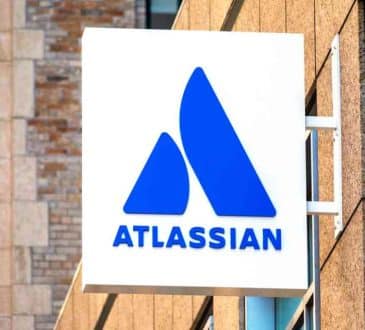Career-Stifling Unconscious Bias Demands a Do-Together Strategy

In recent years, cherished US institutions have revealed toxic workplace cultures characterized by racism, bullying, misogyny, homophobia or a combination of all four, that is hard to fathom. It’s easy enough to write these instances off as extreme anomalies in the corporate world. But are corporate leaders doing enough to quash micro-aggressive, biased-driven behaviors that fuel toxicity, reduce productivity, and negate diversity, equity, and inclusion (DEI) in their organizations?
Some $8 billion is spent in the US on unconscious bias training. Yet painfully slow increases of minority representation in senior roles suggest that when it comes to tackling career-stifling unconscious bias, it’s time to think and act differently. We’re losing the war:
– Only 7 Black CEOs in the Fortune 500 (appx. 1%)
– Only 53 Female CEOs in the Fortune 500 (appx. 10%)
– While accounting for 13 percent of professional positions at large employers, Asian Americans hold just 6 percent of senior management positions.
Corporations tackling workplace bias tend to follow one of four ill-fated strategies that are creating a diversity and EXCLUSION nightmare, rather than the inclusivity their good intentions seek:
DFTS – Do for Them Strategies: The most prevalent, this strategy creates a “them and us” or “us and them” situation where the burden is on a presumed guilty majority leadership to create equal opportunities for the presumed poor hapless marginalized victims. Both perspectives are unconscious biases in and of themselves. They leave leadership in a perpetual state of self-correction and marginalized groups in a perpetual state of reliance on the majority leadership for the advancement of their careers.
DNNS – Do Nothing Now Strategies: This approach denies the problem of career-stifling unconscious bias, delays doing anything at all, or doing the bare minimum that is just enough to tick boxes and give a veneer of caring one way or another. Such environments run the risk of low output, disengagement, and deep unspoken tensions between majority and marginalized groups that could spill over in any moment.
DWAS – Do With Allies Strategies: Here the focus lies on nurturing an environment of allyship that supports inclusion and equal opportunity. The only problem is that they imply a need for allyship to counter the potential for inequity from the presumed guilty majority leadership. Again, sole accountability rests with majority leadership.
DWTS – Do With Them Strategies: The least common and most collaborative of the four unconscious strategies are typically characterized by allyship and collaborative DEI initiatives to ensure equal opportunity for career progression. The problem is that ultimate accountability for change still rests with the majority leadership.
What’s Wrong?
All four strategies have one thing in common: they are unidirectional and based on the premise that career-stifling unconscious bias is a one-way street that starts and ends with majority leadership. In the process, they exclude minorities from the solution and perpetuate a corrosive “guilty perpetrator versus hapless victim” mindset that sustains tensions fueled by distrust in minorities and reverse bias frustrations in majority leadership.
Great leaders recognize that career stifling unconscious bias is a two-way street. It has a multidirectional nature.
For instance, a minority’s misinterpretation of interest in their heritage as a microaggression would be based on the minority’s conditioned view of the majority as exclusionary — in other words, minority reverse bias.
Navigating such occurrences requires a deliberate, do-together strategy to harmoniously address the problem measurably, effectively, and successfully in the moment, when it’s sensed and where it has the potential to do so much damage that spreads.
When implemented correctly, a do-together strategy is characterized by:
- Company-wide recognition that career-stifling unconscious bias is not a one-way street
- Staff equipped to effectively navigate unconscious workplace bias when sensed in the moment
- People-managers/leaders equipped to effectively navigate sensed misinterpretations of unconscious bias attributed to them
- Periodic bias navigation surveys that assess the extent to which all staff feel equipped to navigate multidirectional workplace bias.
What’s the payoff?
Dozens of studies have found that diversity of all kinds is good for business. When you equip an organization’s people with bias navigation skills you catalyze diversity and inclusion exponentially, and organically expedite increases in minority representation in senior roles.
Research by McKinsey shows that companies with more gender diversity in the top teams are more profitable than average.
Research by Morningstar finds that companies with equal numbers of men and women on their boards achieved higher stock returns.
Additionally, Nasdaq reports that a medium-sized firm that appoints a Black executive will experience a 3.1 percent increase in market capitalization within three days of an announcement.
And Goldman Sachs reports that, despite representing less than 10 percent of the population, Asian Americans contributed $15 trillion in current dollars to the growth in gross domestic product.
Unconscious bias, be it subtle yet wounding microaggressions, or “complex bias” that sustains unfair status quos, is fertile ground for insidious toxicity to flourish in the workplace. Do-together strategies and bias navigation tactics are the weed killer to nip it in the bud.
Written by Buki Mosaku.
Have you read?
The Global Passport Index: The World’s Most Powerful Passports.
Countries With The Most Billionaires, 2023.
Top CEOs in Switzerland, 2023.
Biggest banks in the world, as measured by total assets, 2023.
The World’s Richest Self-Made Women, 2023.
Ready to join the CEOWORLD magazine Executive Council– Find out if you are eligible to apply.
Add CEOWORLD magazine to your Google News feed.
Follow CEOWORLD magazine headlines on: Google News, LinkedIn, Twitter, and Facebook.
This report/news/ranking/statistics has been prepared only for general guidance on matters of interest and does not constitute professional advice. You should not act upon the information contained in this publication without obtaining specific professional advice. No representation or warranty (express or implied) is given as to the accuracy or completeness of the information contained in this publication, and, to the extent permitted by law, CEOWORLD magazine does not accept or assume any liability, responsibility or duty of care for any consequences of you or anyone else acting, or refraining to act, in reliance on the information contained in this publication or for any decision based on it.
Copyright 2024 The CEOWORLD magazine. All rights reserved. This material (and any extract from it) must not be copied, redistributed or placed on any website, without CEOWORLD magazine' prior written consent. For media queries, please contact: info@ceoworld.biz
SUBSCRIBE NEWSLETTER








